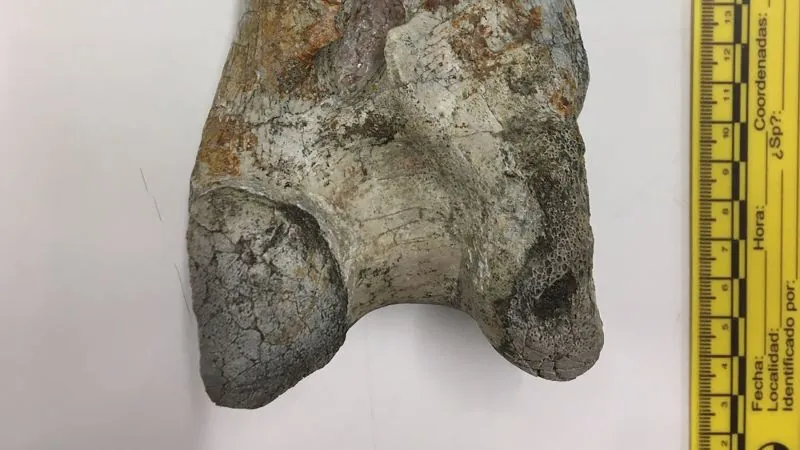
Archaeologists Discover Colossal ‘Terror Bird’ in Colombia – What This Means for Earth’s Prehistoric Ecosystems!
2024-11-09
Author: Jia
In a groundbreaking discovery, paleontologists have unearthed one of the largest 'terror birds' ever identified, adding a new chapter to our understanding of Earth's prehistoric ecosystems. Dating back 12 million years, this massive bird roamed the lush terrains of what is now Colombia, dominating its environment as a top predator and challenging our notions of avian evolution.
The fossil, a remarkably preserved leg bone found in the La Venta fossil site—located in the picturesque Tatacoa Desert—has been identified as belonging to a previously unknown species of the phorusrhacids, commonly referred to as terror birds. According to a recent report published in the journal *Papers in Palaeontology*, this colossal avian stood at an astounding height of over 8 feet (2.5 meters) and weighed around 344 pounds (156 kilograms). This discovery highlights a significant divergence in size when compared to many of its South American counterparts, which typically weighed between 11 pounds (5 kilograms) and 220 pounds (100 kilograms).
Lead researcher Federico Javier Degrange, a paleontologist with extensive experience studying terror birds, noted that the newly identified species is slightly taller than Brazil’s Paraphysornis brasiliensis, which reached about 8 feet in height but weighed more, at approximately 397 pounds (180 kilograms). This finding supports the idea that terror birds evolved to become the apex predators of their time, playing crucial roles that have long fascinated scientists.
Interestingly, while fossils of terror birds are predominantly found in Argentina, this new discovery in Colombia bridges a previously significant geographical gap, suggesting that these formidable birds thrived in a variety of habitats—an insight that could illuminate their evolutionary journey and how they spread northward across the continent.
The Miocene Period, when these birds flourished, was characterized by a vibrant ecosystem in La Venta, filled with large rivers, swamps, and forests. The region supported a diverse range of wildlife, including enormous hoofed mammals which terror birds likely preyed upon. The ecosystem also included creatures like glyptodonts (ancestors of modern armadillos) and massive crocodilians, offering clues to a complex predator-prey dynamic that defined that era.
Fascinatingly, the leg bone displayed tooth marks from Purussaurus, a gigantic caiman that could reach up to 30 feet (9 meters) in length. Although it remains unclear if the caiman attacked live birds or fed on their remains after death, this indication of interaction between species presents new avenues for research into the ecological interactions of ancient South American wildlife.
Experts are hopeful that with this discovery, further exploration could uncover more terror bird fossils in South America, potentially revealing new species that could reshape our understanding of prehistoric avian life. Karen Moreno, a paleontology advisor in Chile, expressed optimism that the La Venta find will shed light on ecological balance and predator-prey relationships during the Miocene.
However, the mystery surrounding the eventual extinction of these giant birds continues to provoke questions among researchers. It is clear that terror birds, even at the top of the food chain, faced challenges posed by environmental changes that could have led to their demise. The Miocene was a period marked by significant climatic changes and shifts in oceanography, making it a critical time for understanding the survival and extinction patterns of prehistoric species.
As scientists delve deeper into this fascinating realm of ancient life, the newfound leg bone offers not just a glimpse into the past, but also prompts broader inquiries into the adaptability and ecological roles of terror birds that may have once ruled the land. The journey of discovery continues, and researchers eagerly anticipate unearthing new knowledge about these extraordinary creatures. Stay tuned for more revelations that could fundamentally reshape our grasp of Earth's evolutionary history!


 Brasil (PT)
Brasil (PT)
 Canada (EN)
Canada (EN)
 Chile (ES)
Chile (ES)
 España (ES)
España (ES)
 France (FR)
France (FR)
 Hong Kong (EN)
Hong Kong (EN)
 Italia (IT)
Italia (IT)
 日本 (JA)
日本 (JA)
 Magyarország (HU)
Magyarország (HU)
 Norge (NO)
Norge (NO)
 Polska (PL)
Polska (PL)
 Schweiz (DE)
Schweiz (DE)
 Singapore (EN)
Singapore (EN)
 Sverige (SV)
Sverige (SV)
 Suomi (FI)
Suomi (FI)
 Türkiye (TR)
Türkiye (TR)